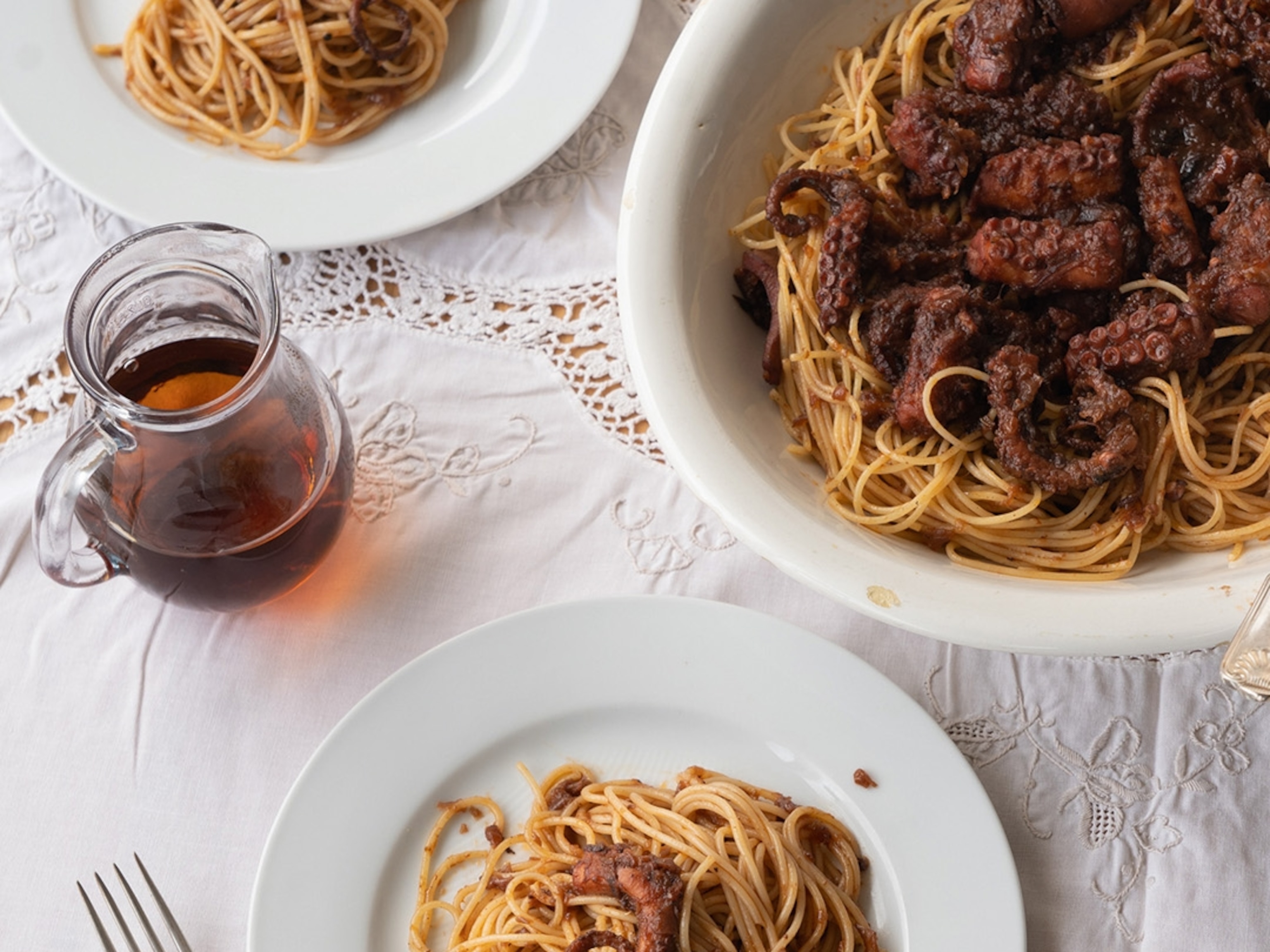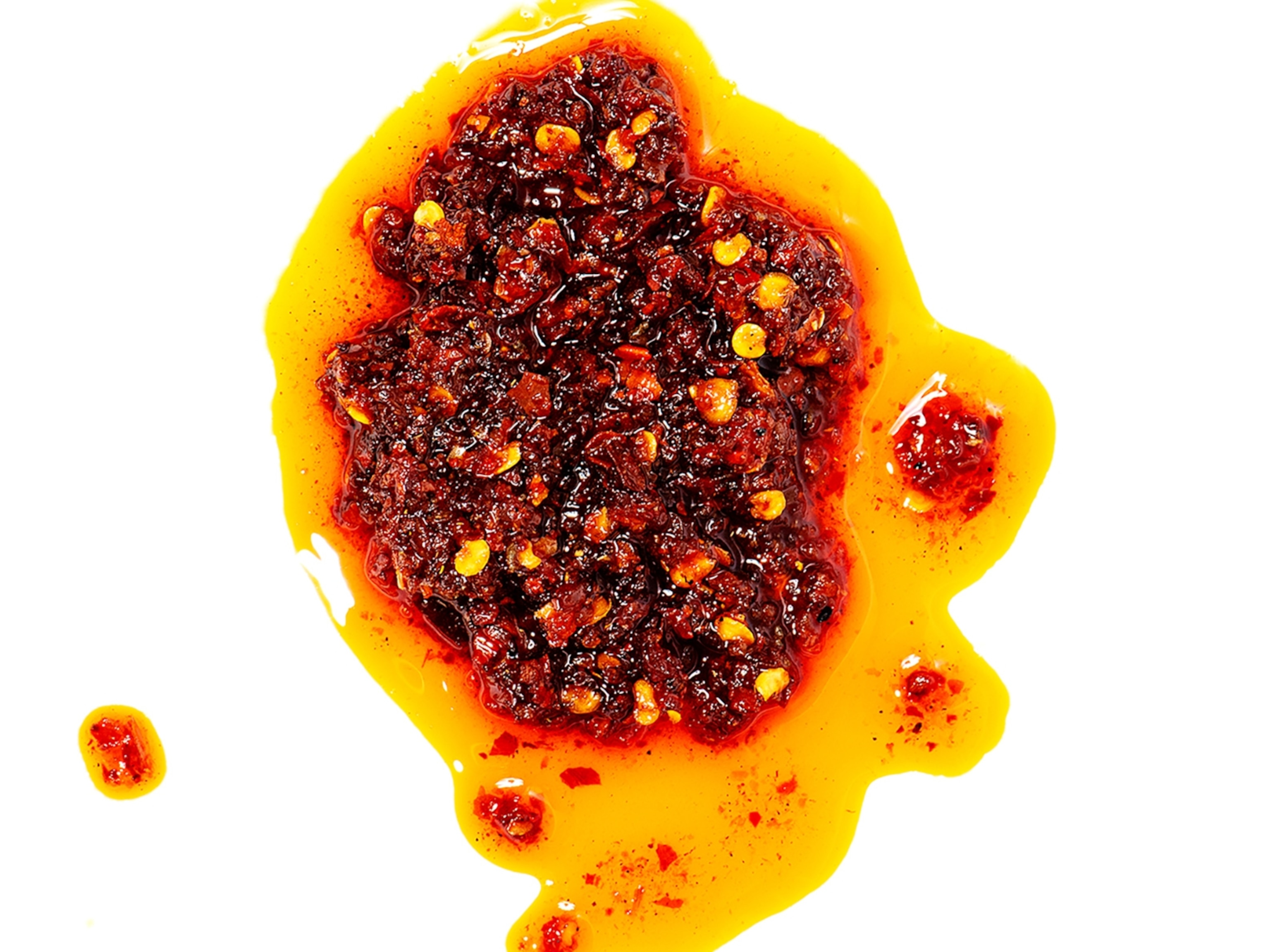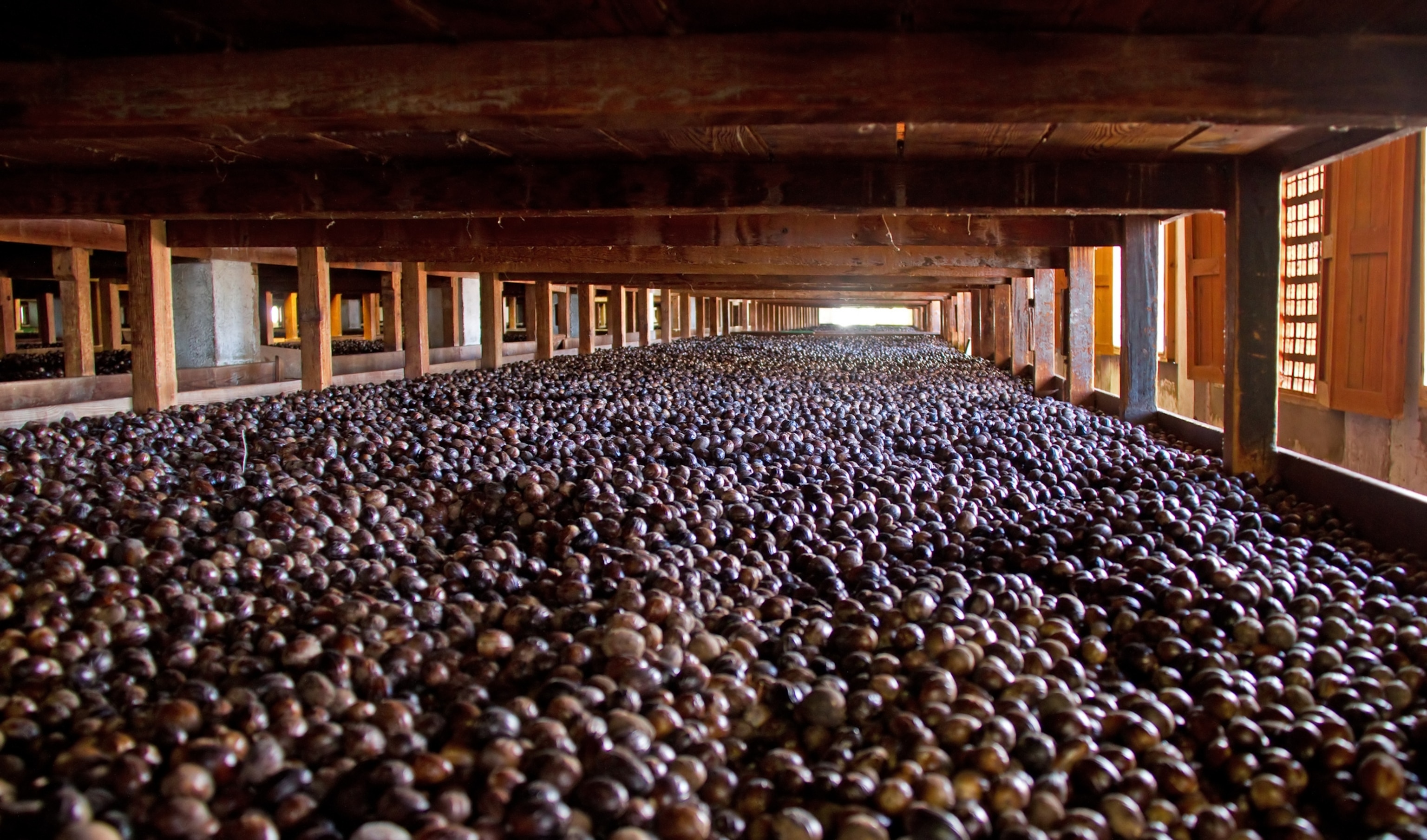
This Holiday Spice Can Make You Loopy
Nutmeg is such a cozy spice.
We sprinkle it on eggnog, add it to French toast and pumpkin pie, and use it to give extra pizzazz to sweet potatoes, carrots, acorn squash, quiche, and crème brulée. Medieval drinkers—who spelled it notemygge—put it in their ale. Nutmeg—and its spice partner, mace—are also key ingredients in haggis, the Scottish pudding made from sheep organs (heart, livers, and lungs) and oatmeal, traditionally boiled in a sheep’s stomach. Robert Burns fans eat it on the poet’s birthday, washed down with a lot of Scotch whiskey.
The nutmeg tree (Myristica fragrans) is a native of Indonesia, where most of the world’s nutmeg is still grown today. (Runner-up is the Caribbean island of Grenada, which boasts a nutmeg on its red, green, and yellow flag.) M. fragrans is a dioecious evergreen—that is, it bears male and female flowers on separate trees. Some botanists nickname it a “harem tree” since one male can easily fertilize ten to twenty females—which is the preferred male-to-female ratio in commercial nutmeg groves. Only female trees bear fruits—yellowish-green and about the size of apricots—which split to release the inner seed. The seed—the fragrant ball that we think of as nutmeg—is surrounded by a tough shiny shell and a lacy bright-red cover called an aril, the source of the nutmeg-like spice mace.
Nutmeg is lovely stuff, rich, aromatic, and homey, reminiscent of cookie-baking and holiday suppers. But it also has a darker side. Nutmeg—if you eat idiotically huge amounts of it—is hallucinogenic and poisonous.
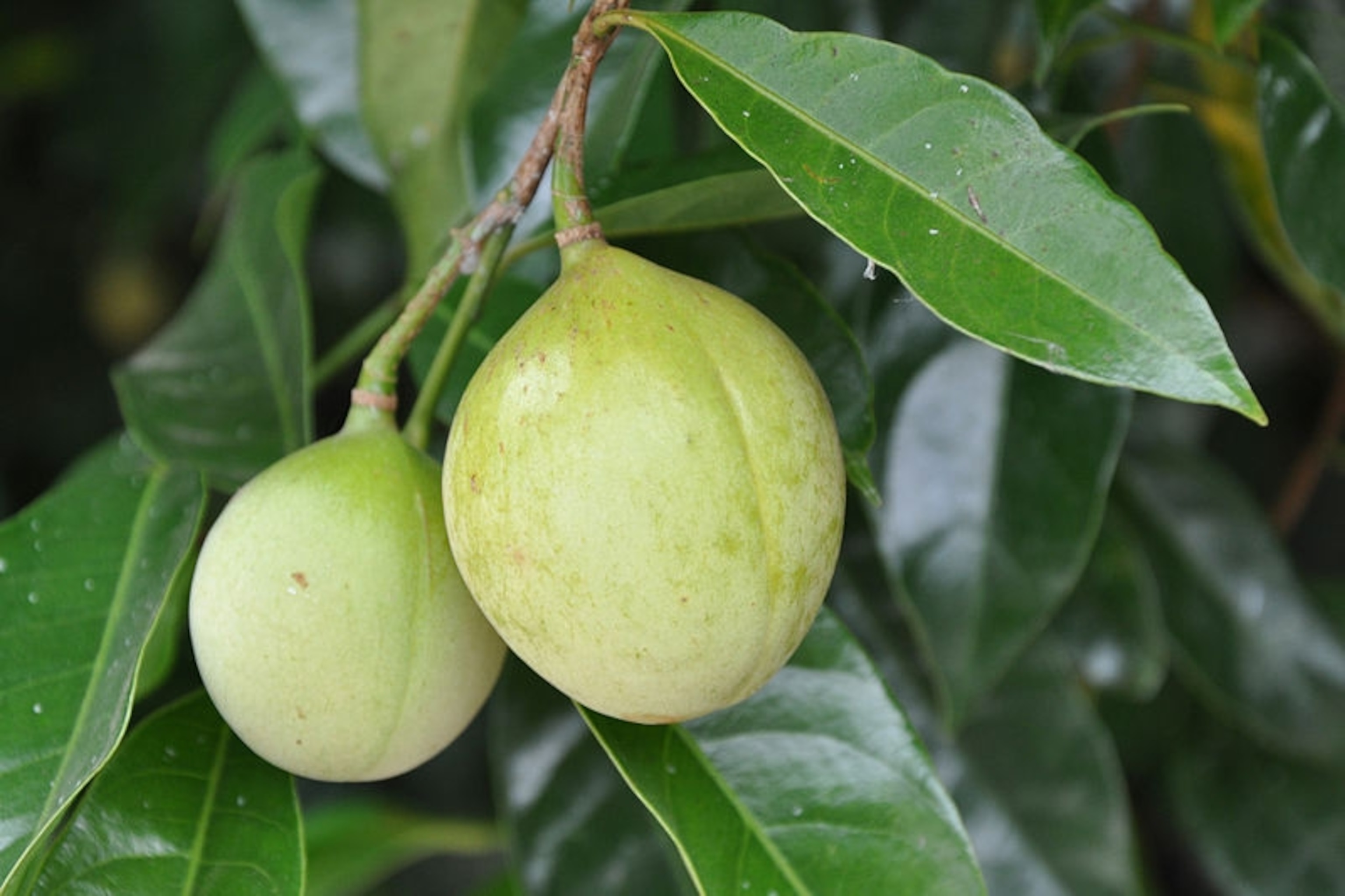
Nutmeg’s Potent Properties
It’s been known for centuries that nutmeg can make you loopy. The visionary 12th-century Benedictine abbess Hildegard of Bingen noted its uplifting effects in her medical treatise, Physica, stating that “When a human being eats nutmeg, it opens his heart, and…puts him [in] a good state of mind.” She then—Hildegard was a foodie—provides a nutmeg tart recipe, recommending that it be eaten often to make the spirit happy. As medieval abbesses go, Hildegard sounds like a sweetie-pie.
Nutmeg in moderation may promote good cheer, but at higher doses, it’s more dramatic. The crucial psychoactive element in nutmeg is myristicin, a chemical relative of mescaline, amphetamine, and ecstasy, which makes up about 4 percent of nutmeg’s complement of essential oils. Eat enough of it and it can make you high—if you don’t mind the accompanying nausea, diarrhea, and risk of convulsions and palpitations. Eat even more of it and it can kill you—though, in the annals of medicine, this is rare, possibly because before you reach that point, nutmeg has made you so sick that you stop consuming it.
Despite the potential dangers of too much nutmeg, people have been mad for it for centuries. Arab traders were bringing it to Europe by at least the 10th century CE, but the first Europeans to see nutmegs growing were the remnants of Magellan’s battered expedition, who stopped by the Moluccas in Indonesia in 1521. Impressed, they dubbed them the Spice Islands and took on a load of nutmeg and cloves.
By the 17th century, Europe was in the throes of a nutmeg passion.
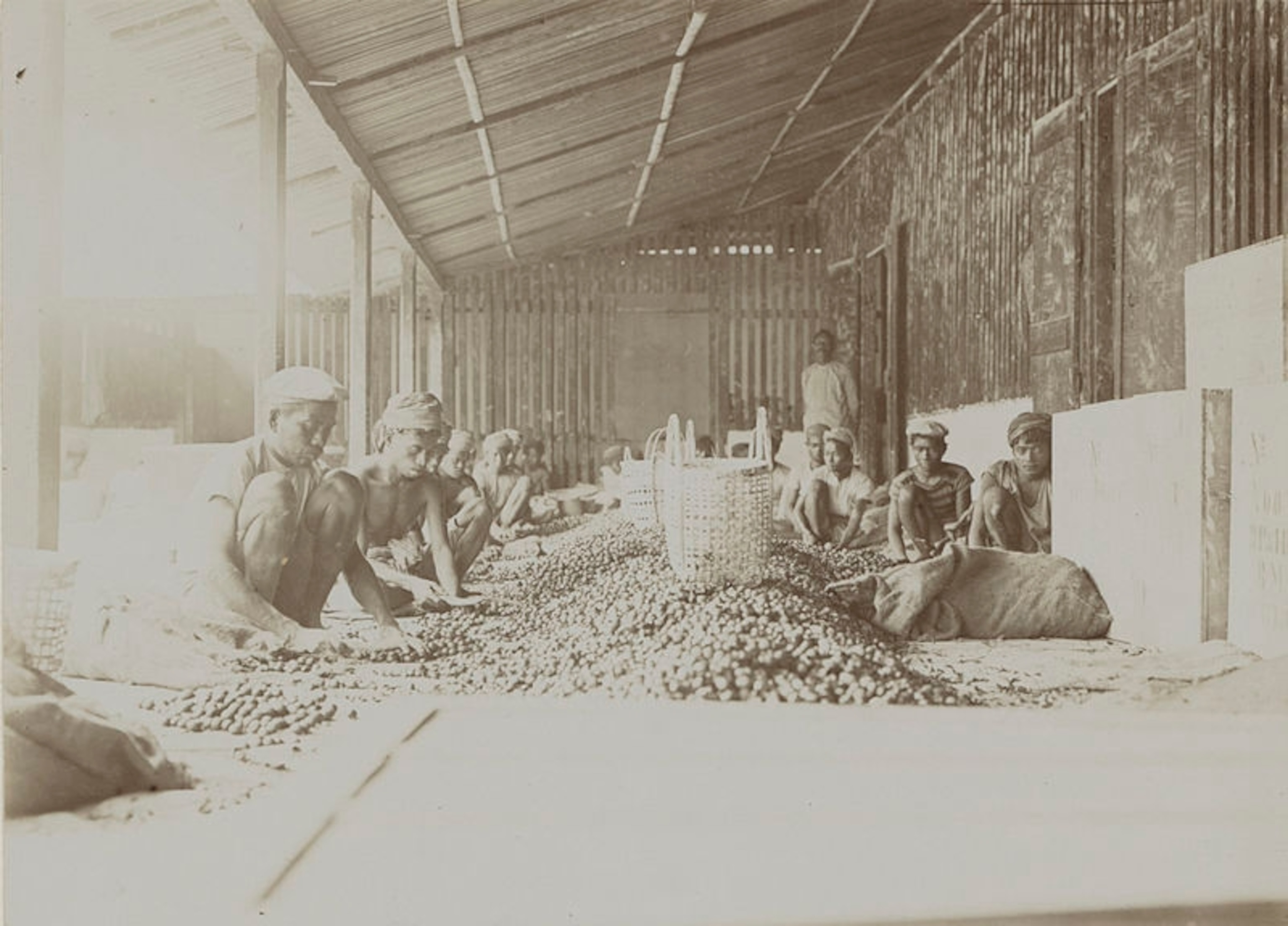
Nutmeg, a 17th Century Panacea
Part of nutmeg’s wild popularity was due to its medicinal reputation—it was held to cure everything from the common cold to bubonic plague—but people also loved its distinctive taste in food. In fact, culinarily, nutmeg was used so universally and in such overwhelming amounts that 17th-century French poet Nicolas Boileau—in a poem titled “The Ridiculous Repast”—wrote sarcastically “Do you like nutmeg? It’s in everything.” In England, a fad arose for personal silver nutmeg graters, carried by diners for ostentatiously adding nutmeg to their meals.
The Portuguese, who had a lock on the nutmeg trade in the 16th century, did their best to maintain their phenomenally profitable monopoly by cleverly falsifying their navigational maps. This didn’t fool the determined Dutch, who forcibly took over the nutmeg islands in the early 1600s, ousting the Portuguese, slaughtering the native islanders, and establishing draconian laws designed to ensure that no nutmeg left Indonesia that wasn’t in Dutch hands. The only sticking point in this scheme was the tiny nutmeg-producing island of Rhun—a low-lying sliver of land barely two miles across—that had been claimed by the British. The ensuing war between Britain and Holland was eventually resolved by a treaty that gave the island of Rhun and its nutmeg trees to the Dutch. The British, in exchange, got Manhattan. At the time, this last looked like a lousy deal.
The Dutch dominated the nutmeg trade for nearly 200 years, until their iron-fisted control was finally cracked by enterprising French explorer and horticulturist Peter Poivre. (Peter, whose last name means Pepper, may have been the inspiration for the “Peter Piper picked a peck of pickled peppers” nursery rhyme.) Poivre smuggled a handful of nutmeg saplings and seeds out of Dutch territory in 1773 and planted them on the island of Mauritius. For the Dutch, it was the beginning of the end—but by then, in any case, the nutmeg craze was tapering off.
In the Caribbean islands, where nutmeg trees were soon found to thrive, plantation owners found that they liked a sprinkle of nutmeg in their rum punch.
See this recipe for Hildegard of Bingen’s nutmeg tarts.
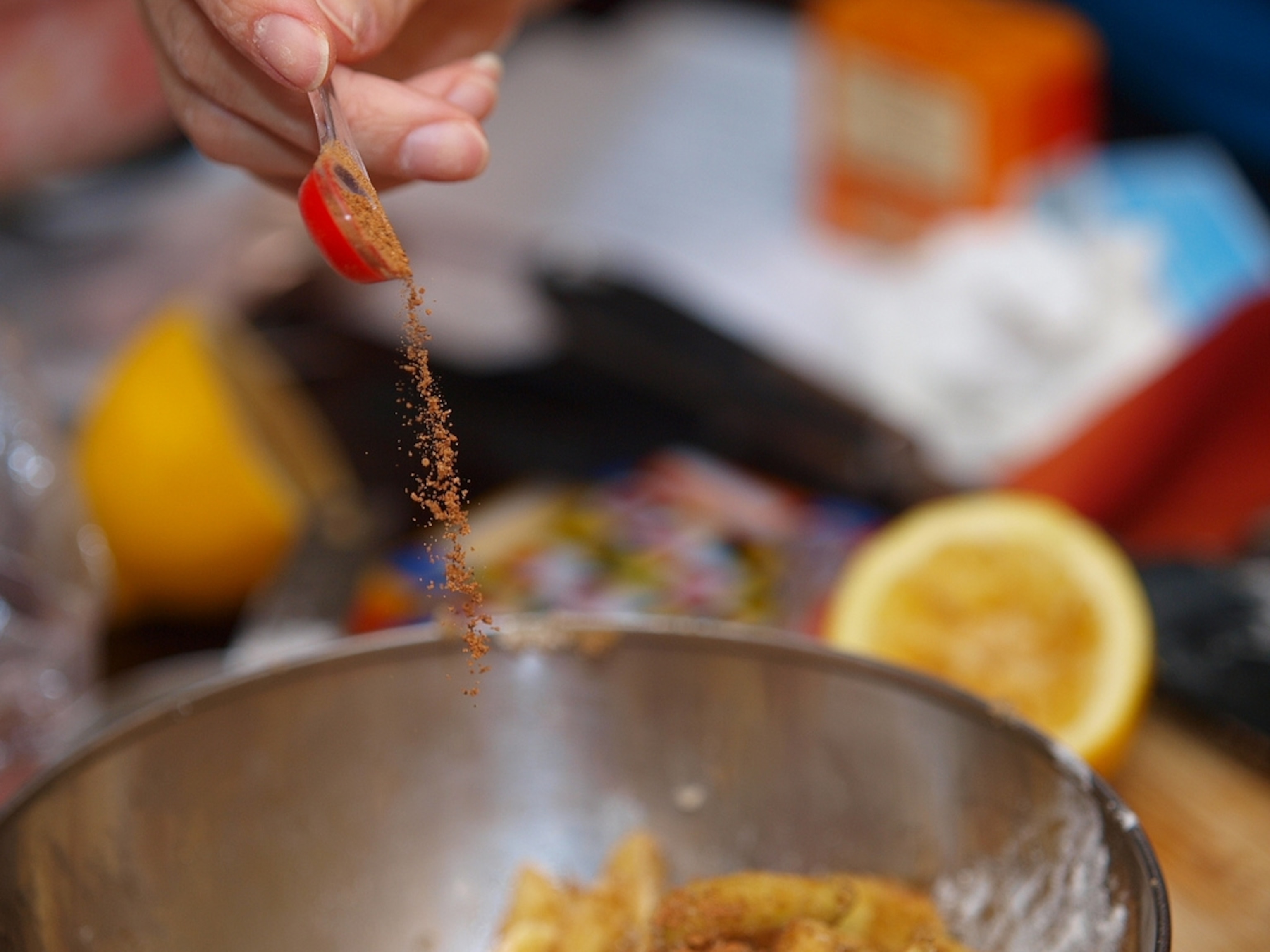
Martha Washington’s Rum Punch
4 oz lemon juice
4 oz orange juice
4 oz simple syrup
3 lemons quartered
1 orange quartered
1/2 tsp grated nutmeg
3 cinnamon sticks broken
6 cloves
12 oz boiling water
In a container, mash the lemons, orange, nutmeg, cinnamon sticks and cloves. Add syrup, lemon and orange juice. Pour the boiling water over the mixture. Let it cool. Strain out the solids. Heat the juice mixture to a boil and simmer for 10 minutes. Let it cool and refrigerate overnight.
In a punch bowl, combine:
3 parts juice mixture
1 part light rum
1 part dark rum
1/2 part orange curaçao
Serve the punch over ice. Top with grated nutmeg and cinnamon.
Milton, Giles. Nathaniel’s Nutmeg: Or the True and Incredible Adventures of the Spice Trader Who Changed the Course of History. Penguin Books, 2000.
Turner, Jack. Spice: The History of a Temptation. Vintage Books, 2005.




